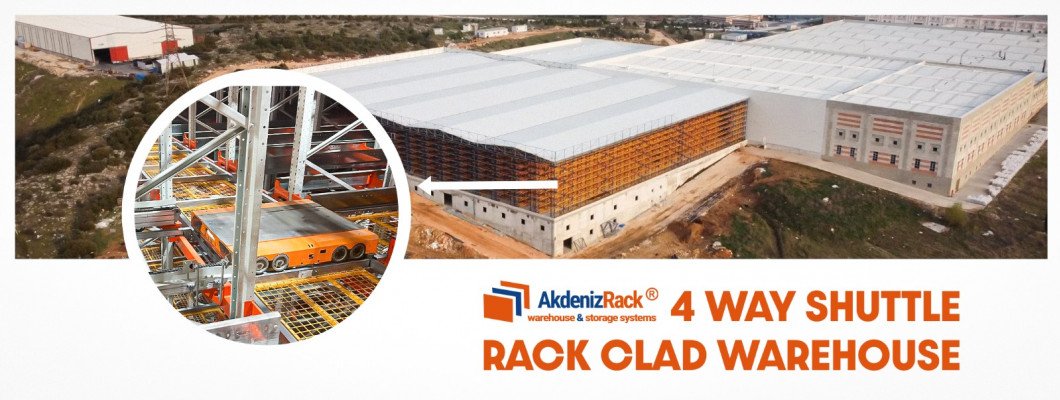
What Is a Four-Way Shuttle?
A four-way shuttle is an advanced automated handling device designed for warehouse storage systems. Unlike traditional two-way shuttles that move only along the depth of a rack or forward and backward on a single track, a four-way shuttle can travel in all directions:
- Lengthwise along the aisle,
- Crosswise between aisles,
- Upwards and downwards when integrated with lifts,
- Into transfer zones for inbound and outbound handling.
This four-directional mobility makes it extremely flexible, allowing it to navigate the storage grid without being bound to a single aisle or track. Each shuttle works independently, carrying pallets, cartons, or totes to and from storage locations, and can be deployed in fleets for higher throughput.
Why Rack-Clad Warehouses Make It More Efficient
Rack-clad warehouses are unique because the racking structure itself forms the building’s framework. The racks act as both storage and structural support, which allows warehouses to be built taller and denser without the need for a separate building shell. When paired with four-way shuttle systems, the efficiency multiplies:
1. Maximum Space Utilization
Rack-clad warehouses often reach great heights, sometimes over 30 meters. Four-way shuttles, combined with vertical lifts, can access every level quickly and directly. This ensures every cubic meter of the building is used for storage, rather than wasted on wide aisles or structural gaps.
2. Seamless Flexibility
Because shuttles can move laterally across aisles, the system is not limited to fixed travel paths. In a rack-clad environment, where racking runs through the entire structure, shuttles can easily reroute to different storage zones, adapt to order volumes, and balance workloads across levels.
3. Higher Throughput
Multiple shuttles can operate at the same time in different aisles and on different levels. In rack-clad warehouses, where density is high, this parallelism means goods can be moved in and out at remarkable speed — far faster than cranes or forklifts.
4. Scalable and Modular
Adding more shuttles is straightforward, making it easy to scale up capacity in a rack-clad warehouse as business grows. The modular design of both the warehouse and shuttle system ensures long-term flexibility.
5. Cost and Energy Efficiency
Rack-clad construction already reduces building costs by eliminating the need for a separate shell. Four-way shuttles further enhance efficiency by using less energy than traditional conveyor-based or crane-based systems, since they only move when required and can be distributed strategically across the system.
Conclusion
A four-way shuttle system is essentially a self-driving machine for warehouse racks, designed to move in any direction and retrieve goods with speed and accuracy. When paired with a rack-clad warehouse, it becomes even more efficient because the structure maximizes vertical and horizontal storage space, allowing the shuttles to fully leverage their mobility.
This combination delivers higher throughput, better scalability, and superior space utilization — making it one of the most advanced solutions for modern automated storage systems.







Leave a Comment